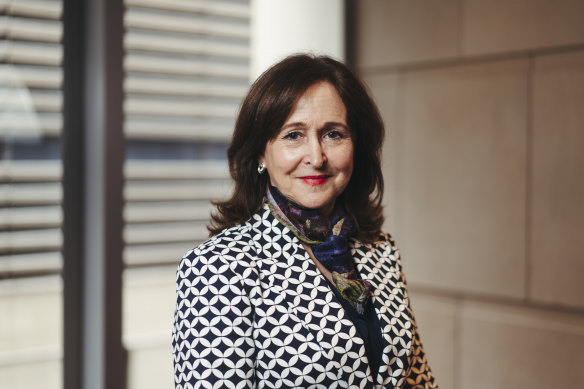
Industry super fund HESTA will leverage its voting power to force some of Australia’s largest publicly listed companies to set gender targets across the entire organisation – not just at the board and executive level – to address the gender pay gap.
The $87 billion fund has written to the chairs and chief executives of ASX 300 companies it invests in to commit to ensuring 40 per cent of its staff are women, after the Workplace Gender Equality Agency (WEGA) released data this year showing the gender pay gap was more than 20 per cent in the private sector.

HESTA chief executive Debbie Blakey wants companies to set gender targets across the entire organisation. Credit: Dion Georgopoulos
While HESTA has for years pushed for gender equality at the highest echelons of businesses, chief executive Debby Blakey said the agency’s figures highlighted more work was needed across the board to cut the pay gap.
“The approach can’t be top down, it also needs to be bottom up,” Blakey said.
“This became very evident to us when we saw the WGEA publish information on gender gaps in remuneration, and a real awareness for us this issue of gender diversity obviously matters at board level … it matters at executive leadership level in terms … but we do feel the need to call on companies to have a sense of their gender diversity across the company.”
Loading
HESTA holds shares in some of the ASX’s largest companies, including Fortescue, Origin Energy and Rio Tinto, and similar to other super funds, is using its voting might to sway company boards on a range of environmental, social and governance issues.
In her fifth annual letter, Blakey said the fund wanted businesses to create “decent work” for its staff by focusing on job security, stress, conditions and flexibility, pointing to Bankwest Curtin Economics Centre research it commissioned showing while roles had become more secure and flexible post-pandemic, women were experiencing higher levels of stress.
Blakey said the “gender stress gap” between men and women had doubled since 2015, and in 2022 was the largest it had been in the past decade because of rising cost of living pressures.



























